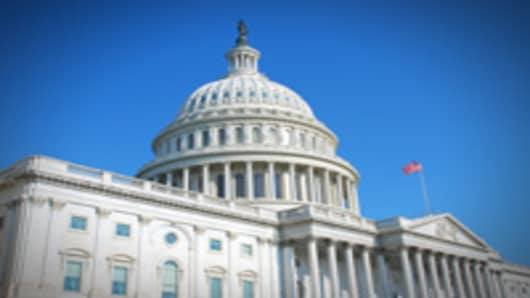US lawmakers have expressed opposition to the idea of allowing US states to seek bankruptcy protection to alleviate pension underfunding and other debt burdens.
"While bankruptcy for states may seem like an attractive alternative to state bail-outs, there are constitutional and policy concerns with this approach," Lamar Smith, chairman of the House Judiciary Committee said at a sub-committee hearing on the matter on Monday.
US states are struggling with years of budget deficits related to the recession while the financial crisis has exacerbated gaps in their pension systems. This combination has led to concern that the most strained states will seek bail-outs.
Joshua Rauh, associate professor of finance at Kellogg School of Management at Northwestern University, referred to unfunded pension liabilities as "hidden debt" that "will eventually force states and localities to choose among the unpalatable options of cutting services, raising taxes, attempting to reduce benefits owed to public employees, defaulting on other obligations or seeking a federal bail-out."
Some Republican lawmakers want to introduce legislation that would allow states to go bankrupt instead.
Mr Smith said that he was unsure whether Congress has the constitutional authority to allow states to seek bankruptcy relief. Under the US system of federalism, states are co-sovereigns.
"I am also concerned that a state bankruptcy option may actually encourage states to borrow more money, knowing that they could later restructure their debt in bankruptcy," Mr Smith, a Republican, said at the hearing, which is the second on state and local finances over the last week.
Matt Fabian, managing director at Municipal Market Advisors, said in testimony that allowing state bankruptcy would further disrupt a fragile market for municipal bonds because investors would need to reassess risk. Mr Fabian estimated that interest rates on long-term bonds could rise by 10-20 percent.
The precise amount of unfunded liabilities has become a topic of debate. Mr Rauh's research, which uses US Treasury rates, estimates that state and local government's face unfunded liabilities of more than $3,000 billion.
States on average use an 8 percent annual return projection to estimate their future pension liabilities and they are allowed to average gains and losses over a number of years through a process known as "smoothing".
Keith Brainard, research director at the National Association of State Retirement Administrators, said that state and local government retirement systems "do not require, nor are they seeking any financial assistance."
His calculations found that the median state pension fund is able to pay benefits until 2030, leaving enough time for reform, such as by reducing future benefits or raising contributions as some states have begun to do.
However, he said potential changes to the accounting methods that are recommended for governments and that could modify investment return assumptions "appear sound."
Separately last week, legislation was introduced in the House that would implement uniform standards for public-employee pension funds and prevent a federal bail-out of state and local government pension plans.



